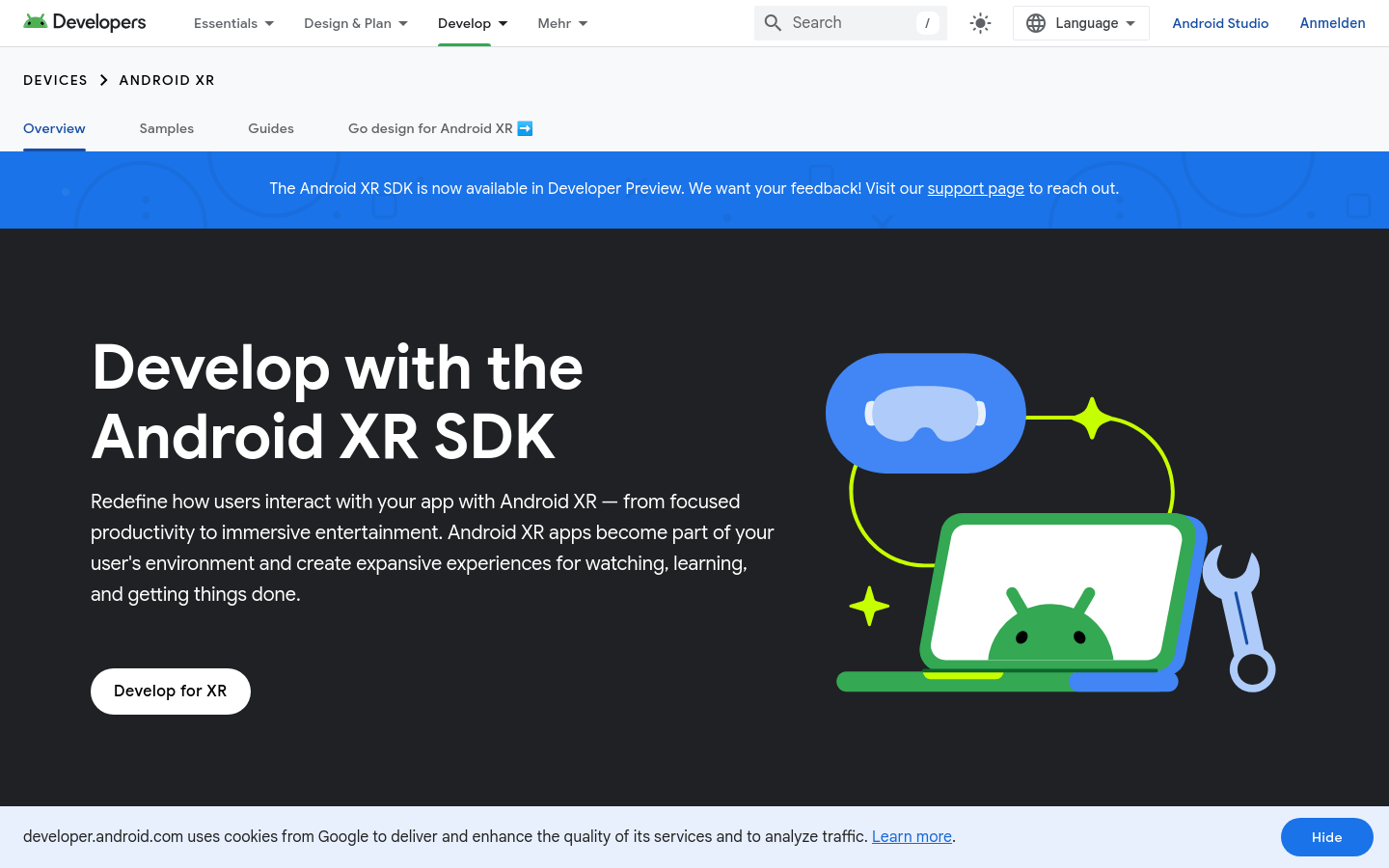

Android XR
Overview :
Android XR is a platform provided by Google aimed at assisting developers in creating and optimizing extended reality (XR) applications. It includes a variety of tools, APIs, and frameworks that enable developers to build immersive XR experiences for Android devices. The significance of Android XR lies in its capability to transform traditional Android applications into XR experiences while allowing developers to use familiar tools and languages, thereby lowering the barrier to XR development. Android XR will integrate Google's AI assistant, Gemini, to offer device control and insights into the content seen by the user.
Target Users :
The target audience is Android application developers, particularly those who wish to provide immersive experiences for their users. Android XR enables developers to leverage existing Android technologies and tools, allowing them to easily extend applications into the XR domain without needing to learn complex XR development techniques from scratch.
Use Cases
- Adapt existing Android large-screen applications to XR by adding spatial components.
- Port Unity games to the Android XR platform using the Unity game engine.
- Utilize Jetpack Compose for XR to design a new user interface for XR applications.
Features
- Android XR SDK: Provides developers with a preview version, facilitating a smooth transition from existing Android applications to XR experiences.
- Support for multiple development tools: Includes Android Jetpack XR, Unity, OpenXR, and WebXR, catering to diverse developer needs.
- Jetpack Compose for XR: Offers UI and interaction recommendations necessary for designing XR applications, along with an auto-layout engine, preset layouts, and spatial UI combinations.
- ARCore for Jetpack XR: Grants applications the ability to perceive and interact with real-world features such as anchors and semantic segmentation.
- 3D tool support: Allows developers to create glTF or GLB files using their preferred 3D tools.
- Hello Android XR sample application: Provides an optimized immersive experience example application, helping developers understand how spatial panels and environments integrate within real applications.
- Android XR Developer Bootcamp: Offers two days of technical guidance and practical opportunities to collaborate with the Android XR team to build new applications or improve existing ones.
How to Use
1. Visit the Android developer website and navigate to the Android XR section.
2. Choose a development path based on the tools you're familiar with, such as Android Jetpack XR, Unity, OpenXR, or WebXR.
3. If you select the Jetpack XR SDK, you can start using Jetpack Compose for XR to design your UI and utilize APIs like ARCore to add spatial awareness features.
4. Test your application using the XR emulator in Android Studio, allowing for debugging without the need for physical devices.
5. Participate in the Android XR Developer Bootcamp to collaborate with experts and enhance your XR development skills.
6. Download and study the Hello Android XR sample application to learn how to incorporate spatial panels and environments into your application.
7. Publish the completed XR application to Google Play for users to download and experience.
Featured AI Tools

Gemini
Gemini is the latest generation of AI system developed by Google DeepMind. It excels in multimodal reasoning, enabling seamless interaction between text, images, videos, audio, and code. Gemini surpasses previous models in language understanding, reasoning, mathematics, programming, and other fields, becoming one of the most powerful AI systems to date. It comes in three different scales to meet various needs from edge computing to cloud computing. Gemini can be widely applied in creative design, writing assistance, question answering, code generation, and more.
AI Model
11.4M
Chinese Picks

Liblibai
LiblibAI is a leading Chinese AI creative platform offering powerful AI creative tools to help creators bring their imagination to life. The platform provides a vast library of free AI creative models, allowing users to search and utilize these models for image, text, and audio creations. Users can also train their own AI models on the platform. Focused on the diverse needs of creators, LiblibAI is committed to creating inclusive conditions and serving the creative industry, ensuring that everyone can enjoy the joy of creation.
AI Model
6.9M













